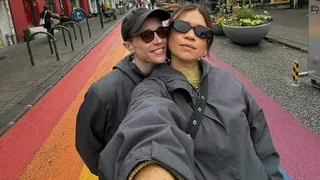September 4, 2012
A First Encounter with Beijing
Christine Negroni READ TIME: 12 MIN.
A friend who spent most of his career writing about high-end travel told me recently that if there's one thing people don't want on a trip, it is surprises. Now, maybe everybody doesn't feel that way; personally, I like the unexpected, figuring that it's part of the adventure. But when the location is remote or the language challenging, then a guide can be a good thing.
When I traveled to China recently, I accepted an offer from Kensington Tours to let one of their experienced professionals handle some of the logistics booking my hotel and arranging for my transportation from the airport and I accepted a three-day sightseeing schedule designed with my interests in mind.
Kensington Tours is an American company that specializes in customized trips. "Every journey we offer is private; there is no set schedule," Sarah Ferguson, Kensington's Region Manager for Asia told me. "Every destination has a guide who lives there." Knowing that I had never been to Beijing and that I write about transportation and outdoor activities, Sarah worked with these themes, creating an agenda that was a blend of first-timers' must-see places and activities that would keep me on the move when I got there.
The result was that I took a cable car at the Great Wall, rode on a dragon boat, learned some basic Tai Chi moves and toured an old Beijing neighborhood on a rickshaw. I never waited in a line to buy a ticket, got lost, struggled to make myself understood or showed up at my destination to find it closed. Along the way I interviewed a number of Americans who used guides from different companies to help them navigate Beijing's crowded sites.
Experienced travelers may wonder, in a city as sophisticated as Beijing, is a guide really necessary? It depends. Unless you speak Chinese, language is a real challenge. It may be possible to handle details on your own but it will take a lot of time and even more tenacity. You might wait in line for an hour to enter the hall housing Chairman Mao Zedong's tomb only to discover at the entrance that your bag needs to be checked across the street at the end of another very long line. Guides help you avoid these frustrating episodes.
And in a country where nearly all drivers are new and inexperienced, the most valuable service a guide can provide is getting you safely from place to place. I'm just saying that in the cities, bikes and pedestrians never have the right of way. Crosswalks, walk signals, and red lights are just for show. Motorcyclists drive on the sidewalk and dart through traffic with a suicidal mania. It is a daring tourist indeed who decides to wade into this mayhem unassisted.
I began my customized tour at Tiananmen Square and the Forbidden City. After taking in the one hundred acre expanse that is Tiananmen, we followed the mass of humanity headed across the street, under the three-story high painting of Mao, and into the Forbidden City, the former royal complex consisting of 9,999 buildings.
At a brisk pace and without stopping to explore the nooks, crannies and tiny galleries along the way, it could take 2 to 3 hours to complete the walk. My guide, Jasmin Wang was extremely valuable because she knew where to linger and what darkened windows were worth pressing our faces to with cupped hands for a view of something interesting on the other side.
After a walk of this length in the hot summer sun, the final garden where large trees provide shade and fountains make a refreshing sound is a welcome resting spot. Here, Jasmin explained the architecture of the buildings, the significance of the large porous rock formations I would see repeatedly and the role of feng sui in the design of the city.
The names themselves indicate that there's a world of difference between the Forbidden City and the Summer Palace. While the City is grand, ornate and yes, forbidding, the Summer Palace is welcoming. It is mostly green space and gardens with a 2,400-foot covered corridor running parallel to the Kunming Lake. It is a World Heritage Site that invites the visitor to wander around freely. But I liked the way people perched in the openings of the open air corridor becoming part of the vista.
Tourists mingle with Beijing residents at the Summer Palace and we were among Chinese families out for the day when we boarded a stunning painted boat across the lake.
The following day when my driver Shi Fu (pronounced like shoo-foo like the Chinese version of chauffeur) Zow Young, came to collect me at my hotel, Jasmin had a surprise for me. She turned around in her seat next to Shi Fu and began to sing. "This is my welcome to China song," she told me. The ditty was created for the Beijing Olympics in 2008. The afternoon before Jasmin had taken me for a walk on the grounds where the games had been held, pointing out the National Stadium that looked like a giant mound of spaghetti and the Aquatics Center called the Water Cube. These days the Chinese use the buildings for public events and activities.
Jasmin might have considered that a song would be a good way to start off a day that would be physically challenging as I was scheduled to visit the Great Wall at Mutianyu, an hour's drive out of Beijing through an agricultural area. We would take the cable car 2100 feet and hike along the one mile section of the granite and brick wall that is open to visitors. This is not for the casual walker; the going is practically straight up.
Many of the tourists were on an organized tour or accompanied by a guide. The most startling sight was the large group whose leader bore a sign saying "Adventures by Disney." Not too much farther, costumed warriors wielding knives sprung out of a tower where they had been concealed, causing everyone to gasp until it clicked: the characters were the Disney version of Chinese history.
Only the very hardy get past the first half mile or so and there's a section further up requiring special hiking permits. Having reached the end of the area set aside for regular visitors, I returned to Jasmin who was sitting primly back at the start point.
After encountering Disney's version of Chinese history, I thought walking past the scrum of souvenir hawkers at the exit would be the second most unpleasant aspect of visiting this very popular section of the Great Wall, but Jasmin taught me how to say, "I'm not buying, thanks anyway," in Chinese and delivering this phrase to the vendors so amused them that soon I was hoping for more opportunities to say it and exchange a moment with the locals. I have found that for the goodwill it garners, it is well worth the effort to be able to say a few things in the language of your destination. I'd conquered 'hello,' 'good-bye' and 'thanks,' but "I'm not buying," was my unexpected go-to phrase for getting a smile out of the Chinese for the rest of my stay.
____________________________________________________________________________
(Travel feature continues on next page)
That afternoon was reserved for my visit to the China Aviation Museum, located in a cave at the base of a mountain that was once a Chinese military base. That in itself made it really cool, and I mean that literally, too. The temperature drop when we walked in had to be about 20 very welcome degrees. Jasmin had visited the museum as a child and she helped explain the exhibits by reading the placards which were only in Chinese.
Chinese aviation then and now, borrows from Russian, American and French design. This had little impact in the past but with commercial aviation booming as the Chinese discover a taste for air travel, the domestic aviation market is poised to eclipse America as the largest in the world. China is designing two new airliners, the C919 with Canada's Bombardier and the ARJ21 regional jet. Models of both are on display at the museum.
For two days I'd seen Chinese history, so on the last day of my Kensington tour, the company arranged for me to have a taste of contemporary culture. Throughout my travels in the city, I'd seen groups of people doing Tai Chi a Chinese martial art that is a mix of exercise and social interaction. You Zhang Dou, my teacher for the morning arrived at my hotel in loose fitting sweat pants, a tee shirt and shoes that looked like ballet slippers. He was in his mid-sixties, handsome and in great shape - an excellent example of the benefits of this workout.
An hour class taught me that Tai Chi is harder than it looks. It is all about measured movements and balance. Shifting weight while remaining stable can only be accomplished when you are doing it correctly.
I was ready to rest after my class so when we boarded the tricycle rickshaw at the entrance to Beijing's most charming and tourist-friendly hutong.
Xilou hutong is a warren of narrow brick paved streets on which hundreds of small ancient homes, shops and restaurants are located. Throughout the neighborhood runs a meandering river that goes all the way to the Summer Palace 26 miles away. The river provides the charming focal point with Venetian-style bridges connecting each side of the hutong.
During the day, tourists wander through shops selling typical souvenirs and local crafts. I visited the shop of kitemaker Mr. Wang whose silk dragon and insect designs were so elaborate and beautifully displayed that the store could have been a museum. Through the hutong's tourist office, Jasmin had also arranged for me to visit a 75-year-old woman named Wang Qing, who has hosted many visitors including Henry Kissinger in the little complex of rooms she shares with her archeologist husband, two adult sons and their families. They live in small tidy suites behind a moon-shaped gate off a side street in the hutong. A breeze through the open window in her living/dining room kept the house cool, and Madam Wang seemed pleased when I complimented the beautiful flowers and fruit trees she had growing in the courtyard.
When the sun goes down, residents in the hutong contend with even more visitors as the restaurants along the riverfront have replaced dining tables on the curb with full-sized sofas. Chinese night life requires lots of drinking, lounging, smoking and music and this hutong is one of the most popular in Beijing for an East meets West style of nightlife.
As I continued my tour of Beijing on my own later in the week, I would veer off a modern main road and find myself stepping back into another hutong. There were old-style homes and shops - but for residents not tourists. Still, everyone I encountered was welcoming as I explored their streets and poked my nose into their markets.
In one, I was amazed to see a beautiful selection of eggs in four colors: brown, white, blue and pink. On the other side of the arcade-like shop, giant balls of floury dough were being fed into extruders by white-aproned bakers who turned the substance into noodles. Beijing is a city with modern supermarkets where eggs are sold by the Styrofoam dozen and meat and fish are wrapped in cellophane. But I was lucky enough to find the back alleyways to see pieces of the city still clinging to former ways of life.
This is why I travel and I'll welcome the assistance of anyone, guide, local or both who will take me off the tourist map and help me find the heart of a destination.
____________________________________________________________________________
Christine Negroni is a travel writer with an interest in aviation and everything else that moves her on the journey. A firm believer that a great trip begins in the head, she makes sure she brings curiosity and a sense of wonder every time she travels. Her writing appears in The New York Times, the International Herald Tribune and Executive Travel magazine. She blogs at www.gohowknowhow.com





